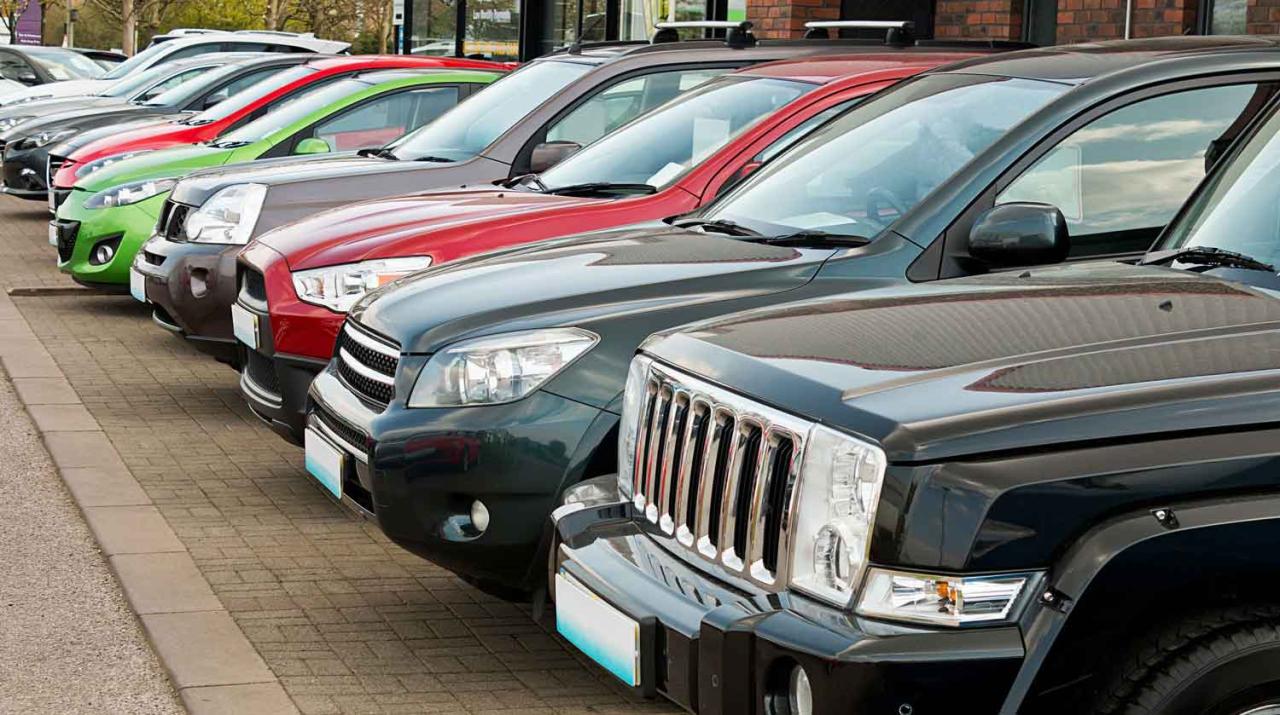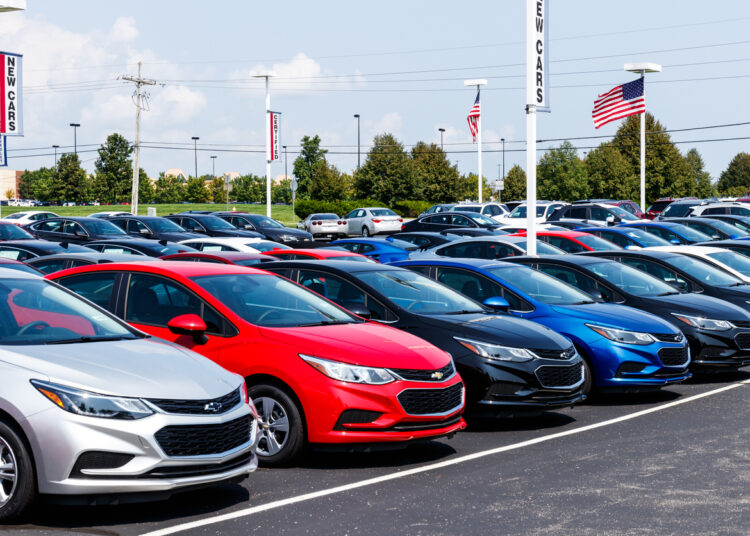The automotive industry often focuses on the gleaming allure of new vehicles, but beneath this polished surface lies a dynamic, robust, and increasingly vital sector: the used car market. Far from being a mere afterthought, the pre-owned vehicle segment plays a critical role in global economies, offering accessibility, value, and a vast array of choices to consumers. Recent years have seen unprecedented shifts and significant growth in this sector, driven by economic fluctuations, supply chain challenges in new car production, and evolving consumer behaviors. This isn’t just about second-hand vehicles; it’s about a resilient ecosystem that provides crucial mobility solutions, often at more accessible price points, making used car market insights essential for anyone looking to buy, sell, or understand the broader automotive landscape.
Why the Used Car Market Is Surging

The recent surge in the popularity and value of used cars is not a simple trend but a complex interplay of various factors, both internal to the automotive industry and external economic forces.
A. New Car Supply Chain Disruptions
Perhaps the most significant catalyst for the recent boom in the used car market has been the widespread disruption to new vehicle production.
- Semiconductor Shortages: The global shortage of semiconductors, critical components in modern vehicles (for everything from infotainment to engine management), severely hampered the production of new cars. This meant fewer new vehicles rolling off assembly lines and into dealerships.
- Production Slowdowns and Factory Closures: Beyond chips, other supply chain issues, labor shortages, and geopolitical events led to temporary factory closures and reduced production capacities for automakers worldwide.
- Reduced New Car Inventory: With fewer new cars being produced, dealership lots became emptier, leading to longer waiting lists for popular models and limited choice for consumers.
- Delayed Deliveries: Consumers faced unprecedented delays, sometimes months or even over a year, to receive newly ordered vehicles, pushing them towards readily available used options.
- Impact on Fleet Sales: Fleet buyers (rental car companies, corporate fleets) also faced new car shortages, reducing the typical flow of off-lease vehicles into the used market.
These disruptions created an artificial scarcity of new vehicles, directly funneling demand into the pre-owned market.
B. Economic Factors and Affordability
Broader economic conditions have significantly influenced consumer behavior and the appeal of used vehicles.
- Inflationary Pressures: Rising inflation has increased the cost of living, making consumers more conscious of major purchases. Used cars often present a more budget-friendly alternative to new vehicles.
- Higher New Car Prices: New car prices have steadily risen due to increased technology, inflation, and market demand, making the affordability gap between new and used vehicles wider.
- Interest Rate Fluctuations: While varying by region, shifts in interest rates can make financing new, more expensive vehicles less attractive, pushing consumers towards lower-priced used options with potentially lower monthly payments.
- Cost of Ownership: Beyond the purchase price, used cars generally have lower depreciation rates than new cars (the steepest depreciation often occurs in the first few years of a new car’s life), which is a significant factor in total cost of ownership. Lower insurance premiums can also be a draw.
- Financial Prudence: Many consumers, facing economic uncertainties, prefer to avoid the larger financial commitment of a new car, opting for the perceived lower risk and better value of a used vehicle.
Economic realities are making used cars an increasingly sensible financial choice for a broader segment of the population.
C. Shifting Consumer Perception and Trust
The image of the “used car” has significantly evolved, driven by greater transparency and improved quality.
- Increased Transparency: The proliferation of online platforms, vehicle history reports (e.g., Carfax, AutoCheck in some regions), and detailed inspection reports provides unprecedented transparency into a used car’s past, build quality, and condition. This reduces buyer apprehension.
- Certified Pre-Owned (CPO) Programs: Automakers offer Certified Pre-Owned programs for their used vehicles, providing factory-backed warranties, multi-point inspections, and often roadside assistance. This offers a “like-new” experience with reduced risk, boosting consumer confidence.
- Improved Vehicle Longevity: Modern vehicles are built to much higher standards of durability and reliability than in the past. Components last longer, and engines/transmissions are designed for higher mileage, making a 5- or 10-year-old car a much more reliable prospect.
- Online Marketplaces and Digital Sales: The rise of sophisticated online used car marketplaces (e.g., Carvana, Vroom, OLX in Indonesia, Carsome in Southeast Asia) offers convenience, wider selection, and often transparent, no-haggle pricing, simplifying the buying process.
- Digital Tools for Research: Consumers can now easily research models, compare prices, read reviews, and check vehicle histories online before even setting foot on a lot, empowering them with information.
- Positive Word-of-Mouth: Satisfied used car buyers contribute to a positive perception, reducing the stigma once associated with pre-owned vehicles.
These factors have significantly enhanced trust in the used car buying experience.
D. Digital Transformation of Sales and Marketing
The buying and selling of used cars have been fundamentally transformed by digital innovation.
- Online Listings and Virtual Showrooms: Most used car inventory is now accessible online, often with high-quality photos, 360-degree views, and detailed specifications.
- Data Analytics for Pricing: Sophisticated algorithms analyze vast amounts of market data (sales history, mileage, condition, features) to provide highly accurate and competitive pricing for used vehicles.
- Remote Transactions and Home Delivery: Many online platforms allow for the entire purchase process, from financing to paperwork, to be completed online, with the vehicle delivered directly to the buyer’s doorstep.
- AI-Powered Customer Service: Chatbots and AI-driven tools assist customers with initial inquiries, financing options, and vehicle information.
- Personalized Recommendations: Data analysis allows platforms to offer personalized vehicle recommendations based on Browse history, budget, and stated preferences.
- Increased Market Reach: Online platforms connect buyers and sellers across vast geographical areas, expanding the market far beyond local dealerships.
The digital revolution has made the used car market more transparent, accessible, and efficient.
E. Desire for Specific Models and Features
For some buyers, the used market offers access to specific vehicles that are no longer available new or are highly sought after.
- Discontinued Models: Certain popular models that have been discontinued may only be available on the used market.
- Specific Trims/Engines: Buyers may seek specific engine configurations, transmission types (e.g., manual transmissions in sports cars), or trim levels that are rare or no longer offered in new models.
- Classic and Collectible Cars: As detailed in other articles, a subset of the used car market is dedicated to classic and collectible vehicles, which can appreciate in value and are exclusively found pre-owned.
- Early Adoption of Technologies: Buyers looking for specific advanced driver-assistance systems (ADAS) or infotainment features from recent model years might find them more affordably in the used market.
- Desire for Immediate Availability: When new car waiting lists are long, the used market provides instant gratification for buyers who need a vehicle immediately.
The used market serves as a treasure trove for those with specific preferences or immediate needs.
Key Segments and Trends within the Used Car Market

The used car market is not monolithic; it comprises various segments, each with its own dynamics and trends.
A. Certified Pre-Owned (CPO) Vehicles
CPO programs are a premium segment of the used car market offered by franchised dealerships, backed by the original manufacturer.
- Rigorous Inspection: Vehicles undergo a comprehensive multi-point inspection (e.g., 100+, 150+, or even 200+ points) to ensure they meet strict manufacturer standards.
- Extended Warranties: CPO vehicles come with extended factory warranties beyond the original new car warranty, providing peace of mind.
- Roadside Assistance and Perks: Often include roadside assistance, vehicle history reports, and special financing rates.
- Higher Price Point: CPO vehicles are typically more expensive than non-CPO used cars of similar age and mileage due to the added benefits and quality assurance.
- Trust and Reliability: They offer a “like-new” experience with significantly reduced risk, appealing to buyers who value reliability but want to avoid new car depreciation.
CPO programs have been a major factor in elevating the perception and value of used cars.
B. Electric Vehicles (EVs) in the Used Market
The used EV market is a rapidly expanding segment with unique characteristics.
- Increasing Supply: As new EV sales surge, more used EVs are entering the market, including early models from Tesla, Nissan Leaf, Chevrolet Bolt, etc.
- Battery Degradation Concerns: While modern EV batteries are designed for longevity, some buyers have concerns about battery degradation over time, which can impact range. Manufacturers often provide battery health reports or guarantees.
- Technology Evolution: Rapid advancements in new EV technology (longer ranges, faster charging) can make older used EVs seem less desirable, potentially impacting their depreciation more quickly than ICE cars initially.
- Lower Running Costs: Used EVs still benefit from lower “fuel” (electricity) costs and reduced maintenance compared to used ICE cars.
- Affordability of Entry: The used EV market offers a more affordable entry point into electric mobility for many consumers who cannot afford a new EV.
- Government Incentives: In some regions, used EVs may also qualify for certain government incentives or tax credits, further boosting their appeal.
The used EV market is maturing, offering more choice and presenting unique considerations for buyers.
C. Commercial and Fleet Used Vehicles
A significant portion of the used car market involves vehicles previously used in commercial fleets or rental car companies.
- Consistent Maintenance: Fleet vehicles often have meticulous maintenance records, as regular servicing is critical for business operations.
- Higher Mileage: These vehicles typically accumulate higher mileage in a shorter period, but often on highways, which can be less taxing than city driving.
- Volume Sales: Large volumes of these vehicles enter the used market, often through wholesale auctions, impacting pricing.
- Basic Trims: Fleet vehicles are often ordered in more basic trim levels, focusing on practicality rather than luxury features.
- Rental Car Market Influence: When new car supply is constrained, rental car companies hold onto their vehicles longer, reducing the flow into the used market. When new supply returns, a surge of rental cars can enter, affecting prices.
This segment provides a steady supply of used vehicles, often at competitive prices.
D. Digital-First Retailers
The emergence of online-only used car retailers is transforming the buying experience.
- Convenience and Transparency: Offering a fully online purchasing process, including financing, trade-ins, and home delivery, with transparent, no-haggle pricing.
- Large Inventory: Access to a vast inventory of vehicles across a wider geographical area than a single physical dealership.
- Pre-Inspected Vehicles: Companies often conduct thorough inspections and reconditioning processes, backed by guarantees or short return periods.
- Customer Experience Focus: Emphasizing ease of use and customer satisfaction to build trust in an online-only model.
- Competition for Traditional Dealerships: These models challenge the traditional brick-and-mortar dealership approach, forcing adaptation.
These platforms are democratizing access to used cars and setting new standards for convenience.
E. Global Market Dynamics
The used car market is increasingly interconnected globally, influencing supply and demand across borders.
- Export Markets: Developed countries often export large volumes of used cars to developing nations where affordability is a key driver.
- Currency Fluctuations: Exchange rates can significantly impact the competitiveness of used car imports and exports.
- Regulatory Differences: Varying import regulations, emissions standards, and vehicle age limits in different countries affect market flows.
- Impact of Global Production: New car production shifts in one region can have ripple effects on used car supply and prices in others.
Understanding these global flows is important for a complete picture of the market.
Key Insights for Buyers and Sellers
Whether you’re looking to buy a pre-owned vehicle or sell your current one, understanding key market insights is crucial for making informed decisions.
A. For Buyers
- Do Your Research:
- Understand Market Value: Use online valuation tools (e.g., Kelley Blue Book, Edmunds, local equivalents in Indonesia like OLX Otomotif, Carmudi) to get a realistic sense of a car’s fair market value based on its year, make, model, mileage, and condition.
- Read Reviews: Look up reliability ratings, common issues, and owner reviews for specific models you’re considering.
- Check Recall History: Use the VIN (Vehicle Identification Number) to check for any outstanding safety recalls.
- Prioritize Vehicle History:
- Get a Vehicle History Report: Always obtain a report (e.g., Carfax, AutoCheck where available, or similar local services) to check for past accidents, flood damage, salvage titles, odometer rollbacks, and maintenance records.
- Review Maintenance Records: A well-documented service history indicates a car has been properly cared for, signaling reliability.
- Insist on an Independent Inspection:
- Pre-Purchase Inspection (PPI): Even with a CPO car, it’s highly recommended to have an independent mechanic (who specializes in that make/model if possible) inspect the vehicle. They can identify underlying issues that might not be obvious to the untrained eye.
- Test Drive Thoroughly:
- Vary Driving Conditions: Drive the car on highways, city streets, and stop-and-go traffic. Test braking, acceleration, steering, and turn signals.
- Listen and Feel: Pay attention to any unusual noises, vibrations, or smells. Check all electrical components (windows, locks, AC, infotainment).
- Consider Total Cost of Ownership:
- Insurance: Get insurance quotes before buying.
- Maintenance: Research typical maintenance costs for the model as it ages.
- Fuel/Charging: Factor in expected fuel or electricity costs.
- Registration/Taxes: Understand local fees.
- Explore Financing Options:
- Get Pre-Approved: Secure financing from your bank or credit union before visiting a dealership to compare offers and strengthen your negotiating position.
- Understand Terms: Read all financing terms carefully, including interest rates, loan duration, and any hidden fees.
B. For Sellers
- Thorough Cleaning and Detailing: A clean car, both inside and out, makes a strong first impression and suggests it has been well-cared for. Consider professional detailing.
- Address Minor Repairs: Fix small dents, scratches, broken lights, or minor mechanical issues. These relatively inexpensive fixes can significantly increase perceived value and asking price.
- Gather All Documentation: Compile a complete service history, original owner’s manual, repair receipts, and any other relevant paperwork. This builds buyer confidence.
- Get a Professional Valuation: Use online tools and check local dealership trade-in values or consignment offers to get a realistic understanding of your car’s market worth.
- Decide on Selling Method:
- Trade-in to a Dealership: Most convenient, but often yields the lowest price.
- Sell to an Online Retailer: Offers convenience and sometimes competitive instant offers.
- Private Sale: Typically yields the highest price, but requires more effort (listing, showing, paperwork, dealing with buyers).
- Consignment: A dealer sells the car for you, taking a commission, offering a middle ground of convenience.
- High-Quality Photos and Description: If selling privately or online, invest time in taking excellent photos from various angles and writing a detailed, honest description of the car’s features, condition, and history.
- Be Transparent: Disclose any known issues or past accidents. Honesty builds trust and can prevent future disputes.
- Price Competitively: Price your car competitively based on market research. Be prepared to negotiate, but know your bottom line.
Conclusion
The used car market insights clearly demonstrate its growing importance and resilience in the global automotive landscape. Propelled by new car supply shortages, economic shifts, and a profound digital transformation, pre-owned vehicles are no longer merely a budget alternative but a preferred choice for millions of consumers seeking value, reliability, and immediate availability. This robust sector is continuously evolving, with the rise of CPO programs, the increasing presence of used EVs, and the dominance of online retailers reshaping how we buy and sell. As the automotive world continues its rapid evolution towards electrification and new mobility models, the used car market will remain a crucial pillar, providing accessible and sustainable transportation solutions, cementing its vital role in the future of how we move. The appeal of a pre-owned vehicle, both practical and increasingly sophisticated, ensures its enduring power.












